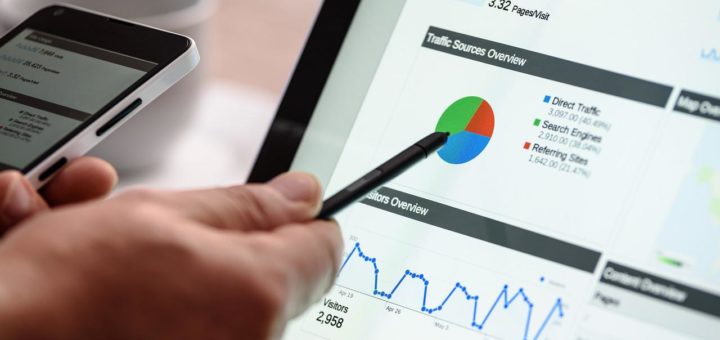Key Considerations When Setting Up Automated Bidding Strategies
In the fast-paced world of digital advertising, automated bidding strategies offer a great way to optimize your ad spend and improve campaign performance. Automated systems can save time and enhance efficiency by leveraging algorithms to manage bids. However, setting up automated bidding isn’t a one-size-fits-all process. To maximize its effectiveness, you need to consider several key factors. This article explores the top considerations when setting up automated bidding strategies to ensure your campaigns achieve their full potential. You can review this post to delve deeper into strategies to optimize your Google Ad campaigns and unlock the full potential of your advertising efforts.
Define Clear Goals and KPIs
 Before diving into automated bidding, setting clear goals and key performance indicators (KPIs) for your campaigns is crucial. Automated bidding strategies can be highly effective, but they need well-defined objectives to target. Whether your goal is to maximize conversions, increase return on ad spend (ROAS), or drive traffic to your website, your automated bidding strategy should align with these goals. For example, suppose your aim is to enhance conversions. In that case, you might use a strategy like Target CPA (Cost Per Acquisition), which focuses on optimizing bids to achieve a specific cost per conversion.
Before diving into automated bidding, setting clear goals and key performance indicators (KPIs) for your campaigns is crucial. Automated bidding strategies can be highly effective, but they need well-defined objectives to target. Whether your goal is to maximize conversions, increase return on ad spend (ROAS), or drive traffic to your website, your automated bidding strategy should align with these goals. For example, suppose your aim is to enhance conversions. In that case, you might use a strategy like Target CPA (Cost Per Acquisition), which focuses on optimizing bids to achieve a specific cost per conversion.
Understand Your Target Audience
A deep knowledge of the target audience is vital for setting up automated bidding strategies that work. Computerized systems use data to adjust bids, and this data should accurately reflect your audience’s behaviors and preferences. Ensure your targeting settings, such as demographics, interests, and geographic locations, are well-defined. This will help the automated system make informed decisions and place bids more effectively. Additionally, reviewing audience performance data regularly can provide insights for further refining your bidding strategy.
Monitor and Adjust Bid Limits
Even with automated systems, setting bid limits is essential to control your budget and prevent overspending. Automated bidding strategies often include options to set maximum and minimum bid limits. These limits ensure that the algorithm does not exceed your budget constraints while optimizing for your chosen goals. Regularly monitor your bid performance and adjust these limits based on campaign performance and budget changes. This proactive approach helps maintain balance and prevents unexpected costs.
Evaluate and Optimize Regularly
 Automated bidding is not a “set it and forget it” solution. Regular evaluation and optimization are crucial for maintaining effectiveness. Analyze performance metrics to determine how well the automated strategy meets your goals. To assess success, consider conversion rates, cost per acquisition, and return on ad spend. Use the data to make informed changes to your bidding strategy, such as tweaking bid limits, modifying targeting options, or testing different automated bidding strategies. Continuous optimization helps ensure that your automated bidding aligns with your evolving business objectives.
Automated bidding is not a “set it and forget it” solution. Regular evaluation and optimization are crucial for maintaining effectiveness. Analyze performance metrics to determine how well the automated strategy meets your goals. To assess success, consider conversion rates, cost per acquisition, and return on ad spend. Use the data to make informed changes to your bidding strategy, such as tweaking bid limits, modifying targeting options, or testing different automated bidding strategies. Continuous optimization helps ensure that your automated bidding aligns with your evolving business objectives.
Setting up automated bidding strategies offers a significant advantage in managing and optimizing digital ad campaigns. By defining clear goals and KPIs, understanding your target audience, monitoring bid limits, and regularly evaluating performance, you can harness the maximum potential of automated bidding. These considerations help ensure that your campaigns are cost-effective and aligned to your overall marketing objectives.…



 The first common black hat SEO technique is duplicate content. You take the content from another website and use it on your own site. This can be done by copying and pasting or spinning the content (changing a few words around to make it unique). Duplicate content can get your website penalized because Google sees it as plagiarism. Many have been tempted to use this technique because they think it will save them time, but it is not worth the risk.
The first common black hat SEO technique is duplicate content. You take the content from another website and use it on your own site. This can be done by copying and pasting or spinning the content (changing a few words around to make it unique). Duplicate content can get your website penalized because Google sees it as plagiarism. Many have been tempted to use this technique because they think it will save them time, but it is not worth the risk. The fourth common black hat SEO technique is page swapping. You take an existing page on your website and swap it with a different page. Many website owners have been tempted to do this because they think it will improve their website’s ranking. However, page swapping can actually get your website in deep trouble. This is something you want to avoid because it can result in your website not to be seen. Black hat SEO techniques can be tempting because they offer an immediate increase in website traffic. However, as we’ve seen, these methods are not sustainable and can lead to penalization from Google or even a ban from the search engine.
The fourth common black hat SEO technique is page swapping. You take an existing page on your website and swap it with a different page. Many website owners have been tempted to do this because they think it will improve their website’s ranking. However, page swapping can actually get your website in deep trouble. This is something you want to avoid because it can result in your website not to be seen. Black hat SEO techniques can be tempting because they offer an immediate increase in website traffic. However, as we’ve seen, these methods are not sustainable and can lead to penalization from Google or even a ban from the search engine.
 The first on the list is SEO. SEO, or search engine optimization, is the process of optimizing a website to rank higher on search engine results pages. This is done through a variety of methods, including on-page optimization (such as keyword research and meta tag creation), off-page optimization (such as link building and social media engagement), and technical SEO (which includes things like site speed optimization and mobile-friendliness). SEO is essential because it can help you reach more people looking for your products or services online. It is one of the most effective ways to grow your business, and it’s also one of the most affordable types of marketing.
The first on the list is SEO. SEO, or search engine optimization, is the process of optimizing a website to rank higher on search engine results pages. This is done through a variety of methods, including on-page optimization (such as keyword research and meta tag creation), off-page optimization (such as link building and social media engagement), and technical SEO (which includes things like site speed optimization and mobile-friendliness). SEO is essential because it can help you reach more people looking for your products or services online. It is one of the most effective ways to grow your business, and it’s also one of the most affordable types of marketing. Finally, we have content marketing. Content marketing is creating and sharing valuable, relevant, and engaging content to attract and retain customers. This can be done through various methods, such as blog posts, infographics, videos, eBooks, and more. Content marketing is crucial because it helps build trust and relationships with your audience. It is also a great way to drive traffic and sales. As you can see, there are various types of digital advertising that you can invest in this year. Each one has its own set of benefits, and it is important to choose the right ones for your business.
Finally, we have content marketing. Content marketing is creating and sharing valuable, relevant, and engaging content to attract and retain customers. This can be done through various methods, such as blog posts, infographics, videos, eBooks, and more. Content marketing is crucial because it helps build trust and relationships with your audience. It is also a great way to drive traffic and sales. As you can see, there are various types of digital advertising that you can invest in this year. Each one has its own set of benefits, and it is important to choose the right ones for your business.



